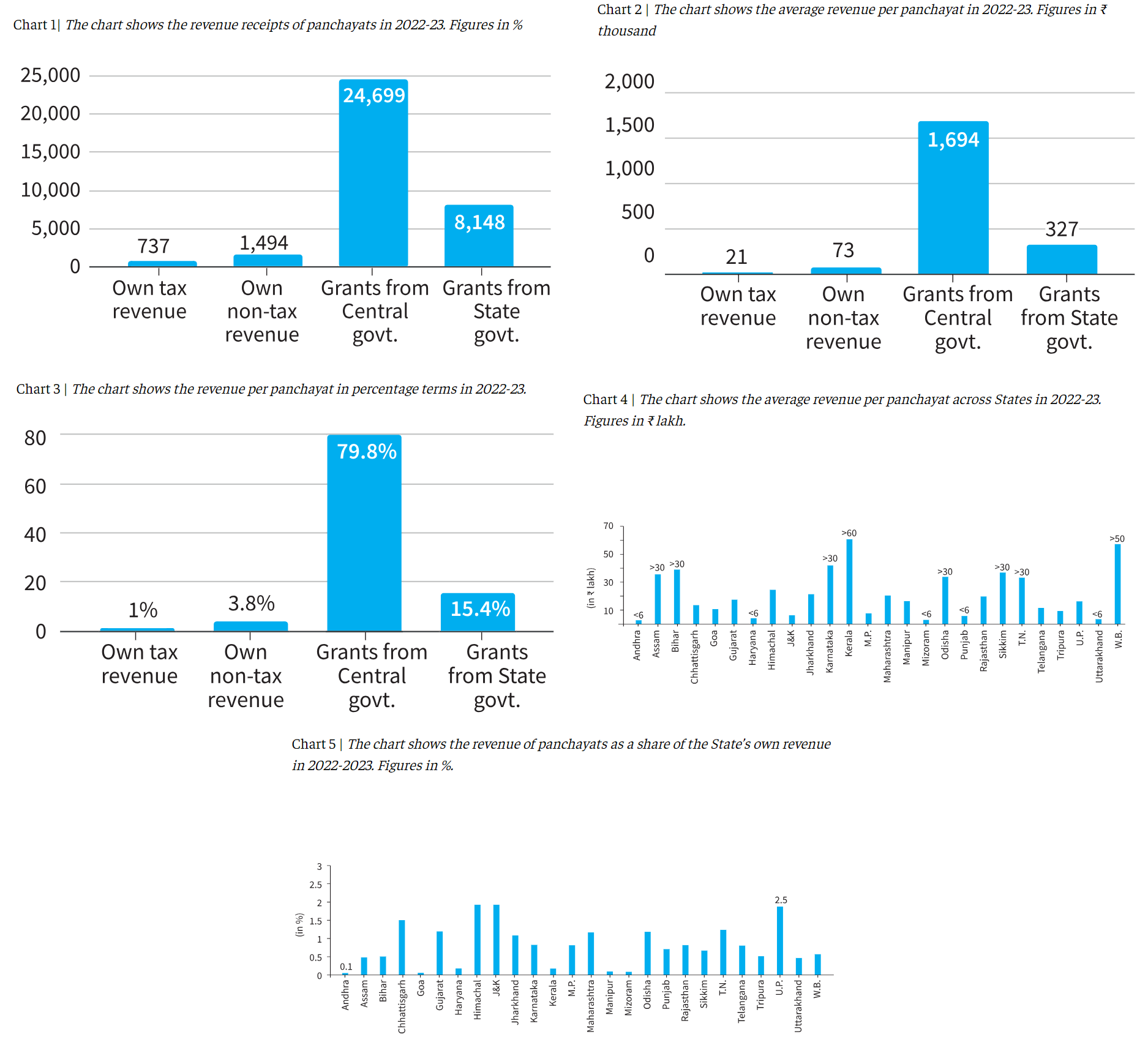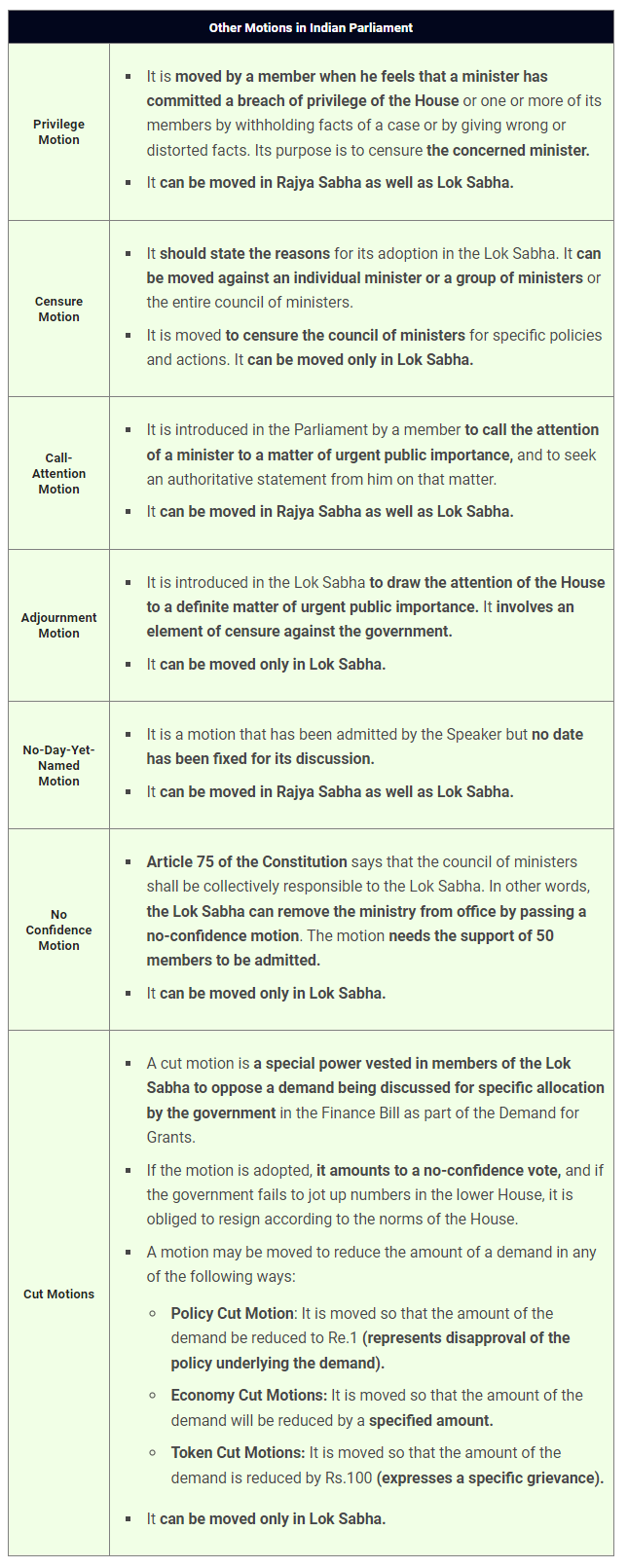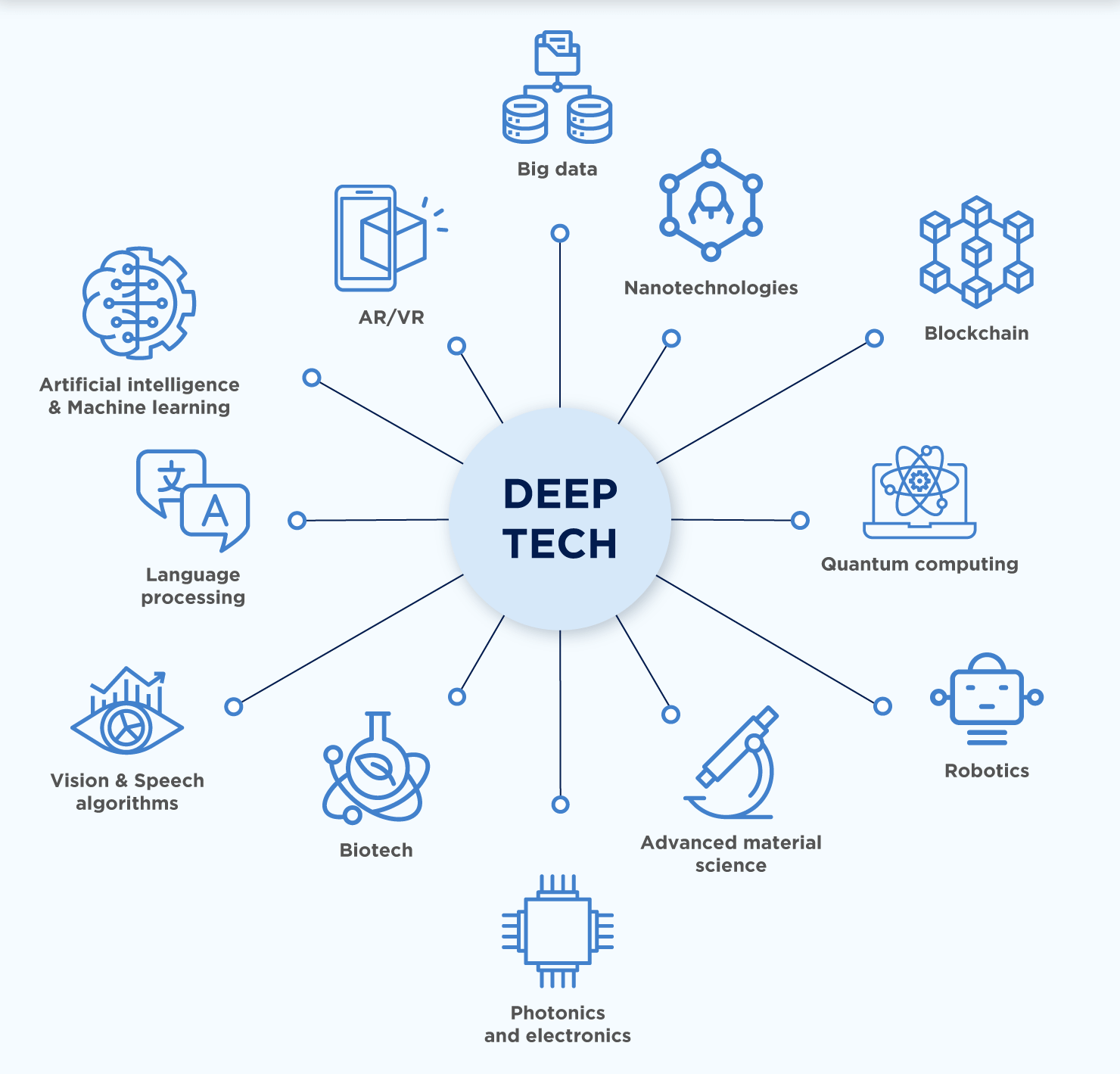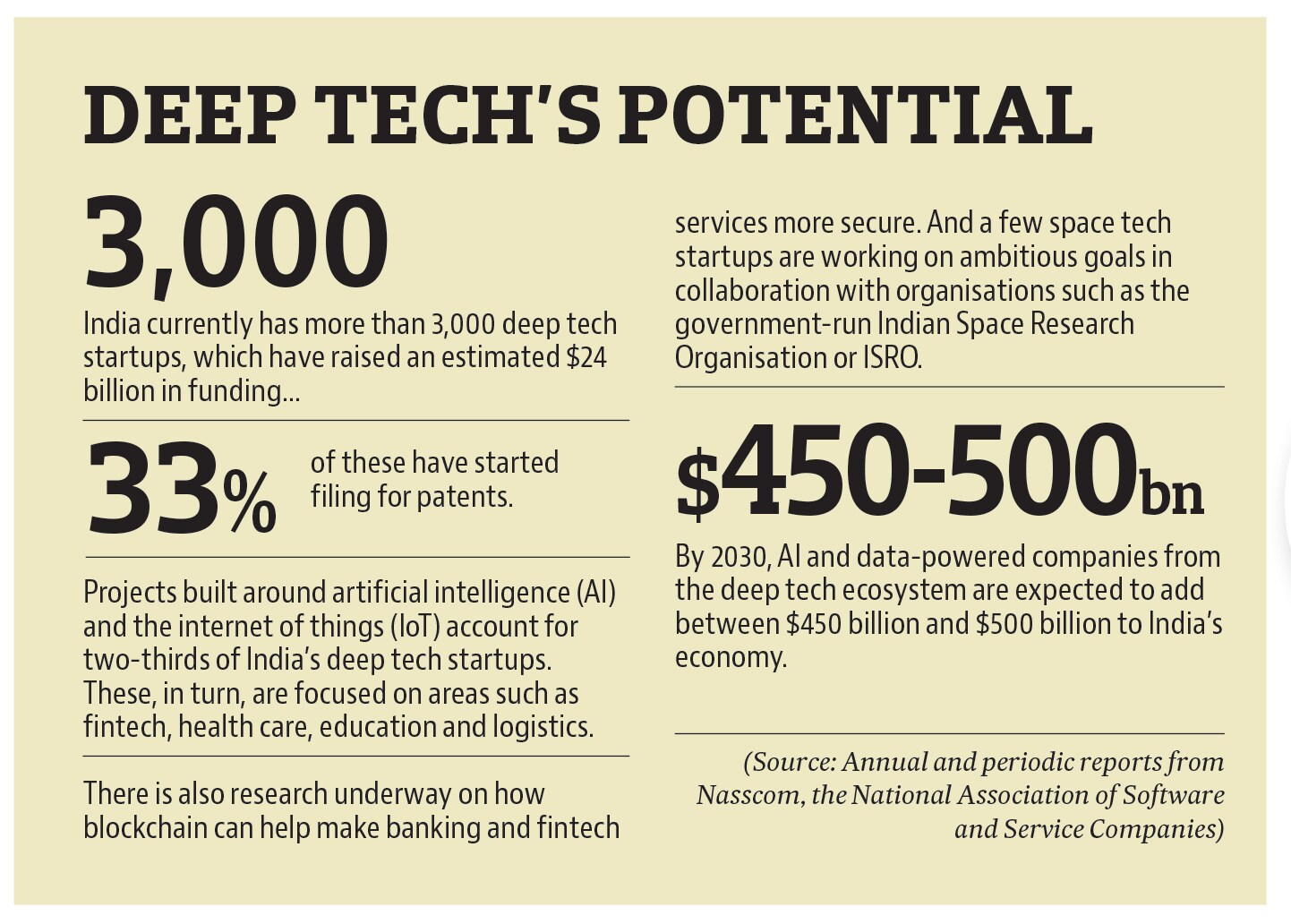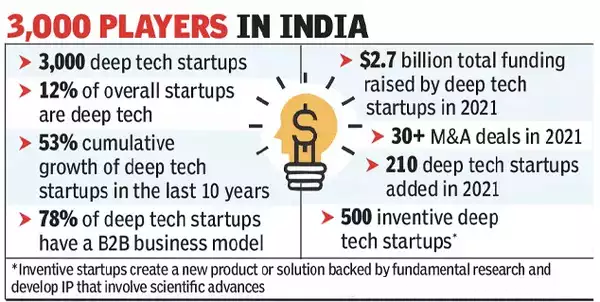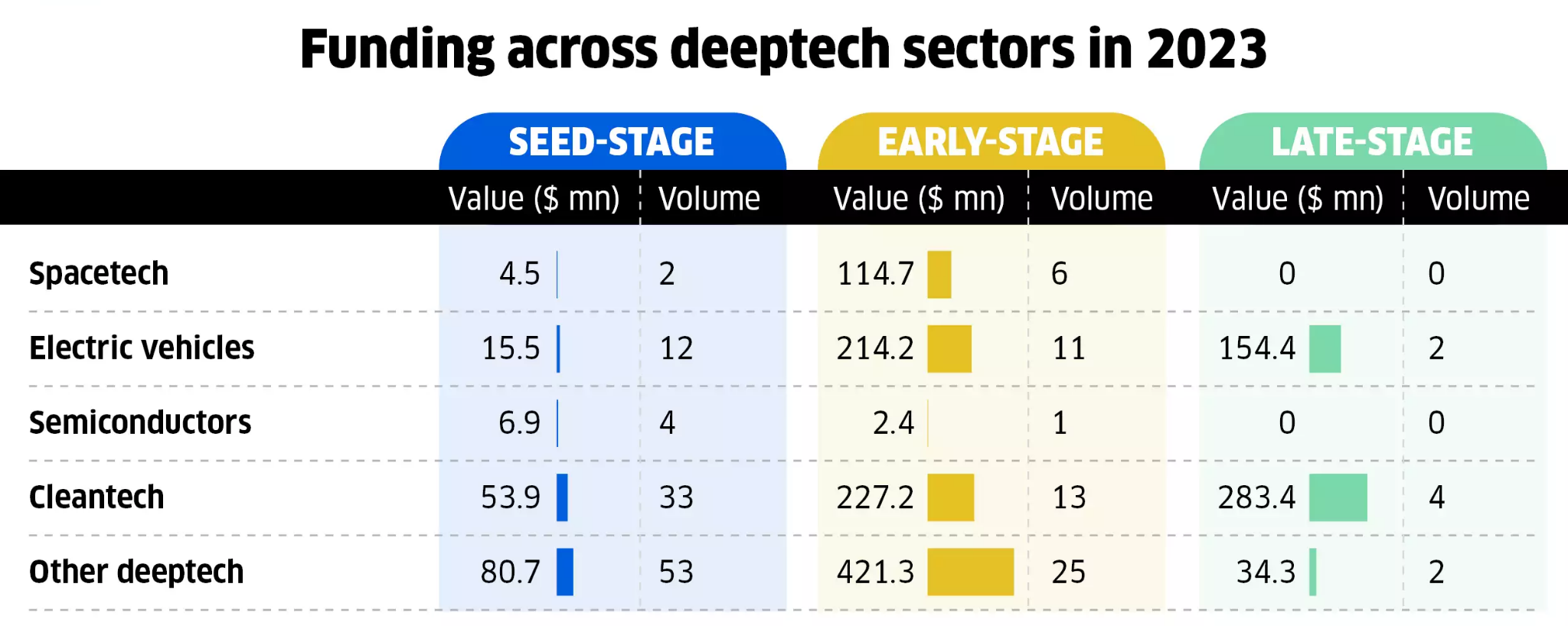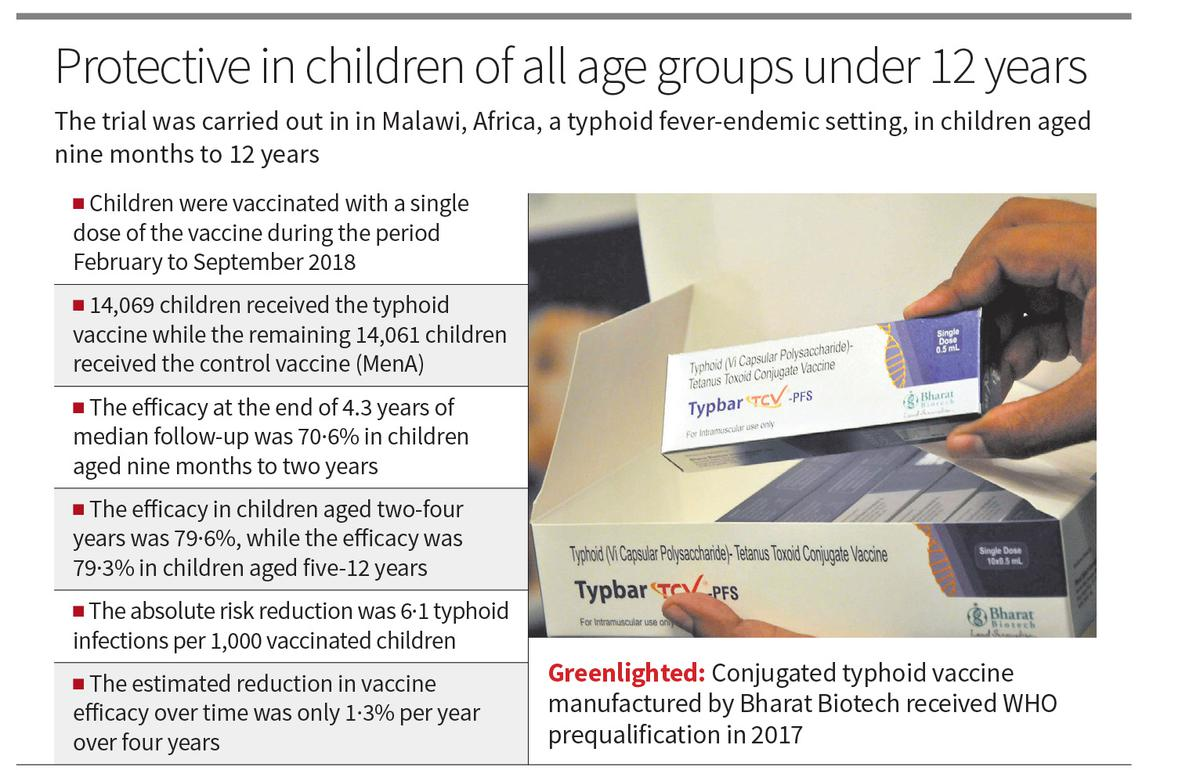Finances of Panchayati Raj Institutions
For Prelims: Reserve Bank of India, Panchayati Raj Institutions, Rashtriya Gram Swaraj Abhiyan scheme
For Mains: Functioning of Panchayats in India, Panchayati Raj Institutions, Local Self Governance, Government Policies & Interventions
Why in News?
The recently released report titled 'Finances of Panchayati Raj Institutions' by the Reserve Bank of India (RBI) for the fiscal year 2022-23 sheds light on the financial dynamics of Panchayati Raj Institutions (PRIs) in India.
What are the Key Highlights of the Report?
- Revenue Composition:
- Panchayats earn only 1% of their revenue through taxes.
- Majority of their revenue comes from grants provided by the Centre and the States.
- Data indicates that 80% of the revenue is from Central government grants, while 15% is from State government grants.
- Revenue Statistics:
- In the fiscal year 2022-23, panchayats recorded a total revenue of Rs 35,354 crore.
- Only Rs 737 crore was generated through their own tax revenue. Panchayats can earn this through taxes on profession and trades, land revenue, stamps and registration fees, taxes on property, and service tax.
- Non-tax revenue amounted to Rs 1,494 crore, primarily from interest payments and Panchayati Raj programs.
- Significantly, panchayats received Rs 24,699 crore in grants from the Central government and Rs 8,148 crore from State governments.
- In the fiscal year 2022-23, panchayats recorded a total revenue of Rs 35,354 crore.
- Revenue Per Panchayat:
- On an average each panchayat earned just Rs 21,000 from its own tax revenue and Rs 73,000 from non-tax revenue.
- Conversely, grants from the Central government amounted to approximately Rs 17 lakh per panchayat, with State government grants totaling over Rs 3.25 lakh per panchayat.
- State Revenue Share and Inter-State Disparities:
- Panchayats' share in their respective State's own revenue remains minimal.
- For example, in Andhra Pradesh, revenue receipts of panchayats form just 0.1% of the State’s own revenue, while in Uttar Pradesh, it forms 2.5%, the highest among states.
- There are wide variations among states regarding average revenue earned per panchayat.
- Kerala and West Bengal lead with average revenues of over Rs 60 lakh and Rs 57 lakh per panchayat, respectively.
- The revenue was over Rs 30 lakh per panchayat in Assam, Bihar, Karnataka, Odisha, Sikkim, and Tamil Nadu.
- States like Andhra Pradesh, Haryana, Mizoram, Punjab, and Uttarakhand have significantly lower average revenues, less than Rs 6 lakh per panchayat.
- Panchayats' share in their respective State's own revenue remains minimal.
- Recommendations of RBI:
- The RBI suggests promoting greater decentralization and empowering local leaders and officials. It advocates for measures to enhance financial autonomy and sustainability of Panchayati Raj.
- The report emphasised that PRIs can enhance resource utilisation by adopting transparent budgeting, fiscal discipline, community involvement in development prioritisation, staff training, and rigorous monitoring and evaluation.
- Additionally, it highlighted the necessity of raising public awareness about PRI functions and encouraging citizen participation for effective local governance.
Why do Panchayats Face Funding Related Issues?
- Limited Taxation:
- The PRI have limited powers in respect of imposing cesses and taxes. They have very little funds doled out to them by the State Government. Further, they are generally reluctant to raise necessary funds due to the fear of losing popularity with the masses.
- Low Capacity and Utilization:
- PRI’s may lack the capacity and skills to generate their own revenue from various sources, such as fees, tolls, rents, etc.
- They also face challenges in utilising the funds efficiently and effectively, due to poor planning, monitoring, and accountability mechanisms.
- Fiscal Decentralisation Issues:
- Insufficient devolution of financial powers and functions from higher levels of government to panchayats hampers their ability to mobilise resources independently. Limited fiscal decentralisation undermines local governance and community empowerment.
What are the Repercussions of Panchayats’ Financial Dependence?
- Dependence on external funding leads to interference from higher tiers of government.
- Delayed release of funds by State governments forces panchayats to use private funds.
- Some regions have also reported non-receipt of funds under key schemes, impacting their functioning.
- The Standing Committee on Rural Development and Panchayati Raj in March, 2023 said that 19 out of 34 State/UTs did not receive any funds under the Rashtriya Gram Swaraj Abhiyan scheme in FY23.
What is a Panchayati Raj Institution?
- The 73rd Constitutional Amendment Act, 1992 gave constitutional status to the Panchayati Raj Institutions (PRIs) and established a system of uniform structure (three tiers of PRIs), elections, reservation of seats for Scheduled Caste, Scheduled Tribes and women and devolution of fund, functions and functionaries to PRIs.
- Panchayats act on three levels: gram sabhas (village or group of small villages), panchayat samithis (block council), and zila parishads (district).
- Article 243G of the Constitution of India gives state legislatures the power to provide Panchayats with the authority and powers to function as self-government institutions.
- For financial empowerment of Panchayats, provisions have been made in terms of Article 243H, Article 280(3)(bb) and Article 243-I of the Constitution.
- Article 243H gives state legislatures the power to authorize Panchayats to levy, collect, and appropriate taxes, duties, tolls, and fees. It also allows them to assign these taxes, duties, tolls, and fees to Panchayats, subject to conditions and limits.
- Article 280(3) (bb), it shall be the duty of the Central Finance Commission to make recommendations to the President as to the measures needed to augment the Consolidated Fund of a State to supplement the resources of the Panchayats in the State on the basis of the recommendations made by the Finance Commission of the State.
- Article 243-I mandates the formation of state finance commissions every five years by the Governor. These commissions are tasked with reviewing the financial status of panchayats and advising the Governor on:
- Principles guiding the distribution of taxes, duties, tolls, and fees between the state and panchayats, including their respective shares and allocation among different levels of panchayats.
- Measures to improve panchayats' financial position.
- Any other finance-related matters referred by the Governor.
- The Ministry of Panchayati Raj looks into all matters relating to the Panchayati Raj and Panchayati Raj Institutions. It was created in May 2004.
UPSC Civil Services Examination, Previous Year Questions (PYQs)
Prelims
Q1. Local self-government can be best explained as an exercise in (2017)
(a) Federalism
(b) Democratic decentralisation
(c) Administrative delegation
(d) Direct democracy
Ans: (b)
Q. The fundamental object of Panchayati Raj system is to ensure which among the following? (2015)
- People’s participation in development
- Political accountability
- Democratic decentralisation
- Financial mobilisation
Select the correct answer using the code given below
(a) 1, 2 and 3 only
(b) 2 and 4 only
(c) 1 and 3 only
(d) 1, 2, 3 and 4
Ans: (c)
Mains
Q1. Assess the importance of the Panchayat system in India as a part of local government. Apart from government grants, what sources can the Panchayats look out for financing developmental projects? (2018)
Q2. To what extent, in your opinion, has the decentralisation of power in India changed the governance landscape at the grassroots? (2022)
Q. In absence of a well-educated and organised local level government system,`Panchayats’ and ‘Samitis’ have remained mainly political institutions and not effective instruments of governance. Critically discuss. (2015)
CBSE to Introduce Credit System
For Prelims: Central Board of Secondary Education, National Education Policy (NEP), 2020, National Credit Framework, Academic Bank of Credits, PARAKH, PM Schools for Rising India (PM-SHRI), NIPUN Bharat Mission, PM e-VIDYA Initiative
For Mains: Major Features of NEP 2020 and Government’s Recent Initiatives Related to Education
Why in News?
The Central Board of Secondary Education (CBSE) is planning significant changes to the academic framework of Classes 9, 10, 11, and 12 as part of its plan to implement creditisation , recommended by the National Education Policy (NEP), 2020.
- This move aims to revolutionise the education landscape by introducing a unified framework that bridges the gap between vocational and general education.
What is the Credit System?
- About: The credit system is a method used in education to quantify and assess the amount of learning a student has acquired.
- It assigns numerical values, known as credits, to different courses or learning activities based on the time and effort required to complete them and demonstrate mastery of the subject matter.
- Aims of Creditisation as per NEP 2020: Creditisation aims to establish academic equivalence between vocational and general education, facilitating mobility between the two education systems, as proposed by the NEP 2020.
- To implement this, the University Grants Commission, the higher education regulator, had come up with the National Credit Framework (NCrF) in 2022.
- NCrF: It is a unified credit framework for the integration of training and skill development into schools and higher education.
- The credits earned by a student will be digitally stored in the Academic Bank of Credits and accessible through a linked Digilocker account.
- To implement this in its affiliated schools, the CBSE formed a subcommittee in 2022 that suggested how the current academic framework should be redesigned to align it with NCrF.
What Changes did the CBSE Subcommittee Propose?
- Notional Learning: An academic year would comprise 1,200 notional learning hours, equating to 40 credits for students.
- Notional learning refers to the stipulated time an average student requires to achieve specified outcomes.
- Subjects are allocated specific hours to ensure a total of 1,200 learning hours per year for students to pass.
- Curriculum Structure for Classes 9 and 10: In Classes 9 and 10, students are required to complete 10 subjects: three languages and seven core subjects.
- Of the three languages, at least two must be Indian languages (e.g., Hindi, Sanskrit, or English).
- The seven core subjects include math and computational thinking, social science, science, art education, physical education and well-being, vocational education, and environmental education.
- Curriculum Structure for Classes 11 and 12: For Classes 11 and 12, students should study six subjects: two languages and four subjects with an optional fifth.
- At least one language must be Indian.
What are Micro-Credentials?
- About: Micro-credentials are brief learning activities with validated specific learning outcomes, offered through online, physical, or hybrid modes at various levels: beginning, intermediate, or advanced.
- They cater to lifelong learners, including working professionals, who may not pursue formal degree programs.
- Providers and Usage: Various entities such as Atingi, Coursera, edX, and others offer micro-credentials. Many universities globally are involved in providing them, with an expectation of more organisations joining this trend.
- Comparison with Formal Degrees: Micro-credentials differ from macro-credentials like undergraduate degrees, which require several years of study.
- While formal degrees use 'credits' based on time spent in lectures, labs, etc., micro-credentials assign credit based on acquiring defined competencies.
- Potential: With the NEP 2020 focusing on skill-based education and employers seeking skilled employees, there is increasing demand for micro-credentials in India.
- Indian Higher education institutes (HEIs) should consider integrating them into their programs, harmonising them with existing academic frameworks.
What are the Other Major Features of NEP 2020?
- About: The NEP 2020 aims at making “India a global knowledge superpower”. It is only the 3rd major revamp of the framework of education in India since independence.
- The two earlier education policies were brought in 1968 and 1986.
- Major Features:
- Universal Access and Quality Education: It aims to ensure universal access to education from pre-primary to Grade 12.
- Quality early childhood care and education for children aged 3-6 are emphasised.
- New Curricular and Pedagogical Structure: Introduces a new structure of 5+3+3+4.
- Promotes integration between arts and sciences, curricular and extracurricular activities, and vocational and academic streams.
- Assessment Reforms and Equity: Establishes the National Assessment Centre, PARAKH.
- It calls for a separate Gender Inclusion fund and Special Education Zones for disadvantaged regions and groups.
- Technological Integration: Establishes the National Educational Technology Forum (NETF) for technology integration.
- Financial Investment and Coordination: Aims to increase public investment in the education sector to 6% of GDP.
- Strengthens the Central Advisory Board of Education for coordination and quality focus.
- It also advocates for 'Light but Tight' regulation.
- Gross Enrolment Ratio(GER) Targets: Aims to increase GER to 100% in preschool to secondary level by 2030.
- Targets GER in Higher Education, including vocational education, to reach 50% by 2035.
- Proposes holistic and multidisciplinary education with multiple entry/exit options.
- Universal Access and Quality Education: It aims to ensure universal access to education from pre-primary to Grade 12.
- Major Initiatives Taken Under NEP 2020:
UPSC Civil Services Examination, Previous Year Question (PYQ)
Prelims
Q. Which of the following provisions of the Constitution does India have a bearing on Education? (2012)
- Directive Principles of State Policy
- Rural and Urban Local Bodies
- Fifth Schedule
- Sixth Schedule
- Seventh Schedule
Select the correct answer using the codes given below:
(a) 1 and 2 only
(b) 3, 4 and 5 only
(c) 1, 2 and 5 only
(d) 1, 2, 3, 4 and 5
Ans- (d)
Mains
Q1. How have digital initiatives in India contributed to the functioning of the education system in the country? Elaborate on your answer. (2020)
Q2. Discuss the main objectives of Population Education and point out the measures to achieve them in India in detail. (2021)
Motion of Thanks
For Prelims: Motion of Thanks, Parliament, Rajya Sabha, 75th Republic Day, Foreign Direct Investment, Khadi and Village Industries
For Mains: Parliament, Motions in Parliament, Government Policies & Interventions
Why in News?
Recently, Prime Minister Narendra Modi replied to the Motion of Thanks on the President’s address to Parliament in the Rajya Sabha, highlighting the significant milestones in India’s journey towards the 75th Republic Day.
What is a Motion of Thanks?
- The Motion of Thanks is a parliamentary procedure in which a formal motion is presented to express gratitude or appreciation for the President’s Address to both Houses of Parliament.
- The President’s Address is a statement of policy of the Government and, as such, is drafted by the Government. It contains a review of various activities and achievements of the Government during the previous year and sets out the policies, projects and programmes which the Government wishes to pursue concerning important national and international issues.
- Article 87 of the Constitution of India states that the President will address both Houses of Parliament at the beginning of the first session after each general election and at the beginning of the first session of each year. The President will also inform Parliament of the reasons for its summons.
- The rules that govern the procedure of either House will make provisions for the allotment of time for discussion of the matters referred to in the address.
- Such an Address is called a 'special address', and it is also an annual feature.
- The address of the president, akin to the 'speech from the Throne' in Britain, is discussed in both Houses of Parliament through a motion called the 'Motion of Thanks.'
- If any of the amendments are put forward and accepted then the Motion of Thanks is adopted in the amended form.
- Amendments may refer to matters contained in the Address as well as to matters which, in the opinion of the member, the Address has failed to mention.
- At the end of the discussion, the motion is put to vote.
- If any of the amendments are put forward and accepted then the Motion of Thanks is adopted in the amended form.
- The discussion is concluded by the reply of the Prime Minister or any other Minister. Immediately thereafter, the amendments are disposed of and the Motion of Thanks is put to vote and adopted.
- The Motion of Thanks must be passed in the House. Otherwise, it amounts to the defeat of the government. It is one of the ways through which the Lok Sabha can also express a lack of confidence in the government.
- The limitation of motion of thanks is that the members cannot refer to matters that are not under the direct responsibility of the Central Government or mention the name of the President in the debate.
What are the Highlights of the President's Address?
- Fastest-Growing Major Economy:
- Despite global challenges, the President declared India as the fastest-growing major economy, maintaining a growth rate of over 7.5% for two consecutive quarters.
- Macro-Economic Stability:
- The government's focus on ensuring macroeconomic stability is credited for India's transformation from a 'fragile five' to a 'top five' economy.
- Macroeconomic Stability describes a national economy that has minimised vulnerability to external shocks, which in turn increases its prospects for sustained growth.
- It acts as a buffer against currency and interest fluctuations in the global market.
- Exposure to currency fluctuations, large debt burdens, and unmanaged inflation can cause economic crises and a collapse in Gross Domestic Product (GDP).
- The government's focus on ensuring macroeconomic stability is credited for India's transformation from a 'fragile five' to a 'top five' economy.
- Impressive Export Figures:
- India's exports witnessed substantial growth, surging to over USD 775 billion, showcasing the nation's economic resilience.
- Foreign Direct Investment (FDI) Surge:
- FDI flows doubled, contributing to India's economic strength.
- India stood at USD 45.15 billion in 2014-2015 and have since consecutively reached record FDI inflows for eight years. The year 2021-22 recorded the highest ever FDI at USD 83.6 billion.
- During FY 2022-23, FDI inflow of USD 71 billion (provisional figure) has been reported.
- Khadi and Village Industries Boom:
- Sales of Khadi and Village Industries products quadrupled from the financial year 2013-14 to the financial year 2022-23, reflecting the success of initiatives supporting indigenous industries.
- Income Tax Returns Soar:
- The number of people filing income tax returns increased significantly from about 3.25 crore in the assessment year (AY) 2013-14 to approximately 8.25 crore in the A.Y. 2023-2024.
- Robust Forex Reserves:
- The President announced that India's forex reserves now exceed USD 600 billion, underscoring the nation's financial stability.
- PM-Kisan Samman Nidhi Scheme:
- Under PM-Kisan Samman Nidhi Yojana farmers received over Rs 2.8 lakh crore, emphasising the government's commitment to supporting agricultural livelihoods.
- Loans for Farmers:
- Over the past decade, there has been a threefold increase in easy loans for farmers from banks, contributing to the financial well-being of the farming community.
- Pradhan Mantri Fasal Bima Yojana Success:
- The President highlighted the success of the Pradhan Mantri Fasal Bima Yojana, where farmers paid a premium of Rs 30,000 crore and received a substantial claim of Rs 1.5 lakh crore.
- Ram Temple Construction:
- The President highlighted the historic occasion of the construction of the Ram Temple in Ayodhya.
- Emphasized that the centuries-old aspiration to build the temple had become a reality, symbolizing a cultural milestone for the nation.
- The President noted the role of the government in promoting heritage tourism, citing the significant turnout of 13 lakh devotees during the five days of consecration ceremonies in Ayodhya.
- The President highlighted the historic occasion of the construction of the Ram Temple in Ayodhya.
UPSC Civil Services Examination, Previous Year Questions (PYQs)
Prelims
Q. The Parliament of India exercises control over the functions of the Council of Ministers through (2017)
- Adjournment motion
- Question hour
- Supplementary questions
Select the correct answer using the code given below:
(a) 1 only
(b) 2 and 3 only
(c) 1 and 3 only
(d) 1, 2 and 3
Ans: (d)
Mains:
Q.1 To what extent, in your view, the Parliament is able to ensure accountability of the executive in India? (2021)
Q.2 Do you think that Constitution of India does not accept principle of strict separation of powers rather it is based on the principle of ‘checks and balance’? Explain. (2019)
India's Ambitious Push for Deep Tech
For Prelims: Deep Tech Startups, Deep Tech, Artificial Intelligence, Machine Learning, Internet of Things, Big Data, quantum computing
For Mains: Deep Tech Startups and India
Why in News?
During her Interim Budget address, the Finance Minister unveiled a Rs 1 lakh crore fund aimed at offering long-term, low-cost, or zero-interest loans for research and development initiatives.
- She also pledged to introduce a new program to enhance deep-tech capabilities in defense, hinting at a broader policy to support deep-tech startups across various sectors, expected later this year.
What is Deep Tech?
- About:
- Deep tech or deep technology refers to a class of startup businesses that develop new offerings based on tangible engineering innovation or scientific discoveries and advances.
- Deep tech fields like Artificial Intelligence, advanced materials, blockchain, biotechnology, robotics, drones, photonics, and quantum computing are moving more and more quickly from early research to market applications.
- Characteristics of Deep Tech:
- Impact: The deep tech innovations are very radical and disrupt an existing market or develop a new one. Innovations based on deep tech often change lives, economies, and societies.
- Time & Scale: The time required for deep technology to develop the technology and reach market-ready maturity is way more than shallow technology development (like mobile apps and websites).
- Capital: Deep tech often requires a lot of early-stage funding for research and development, prototyping, validating hypothesis, and technology development.
Why Deep Tech Matters?
- Addressing Global Challenges: Deep tech is poised to play a crucial role in addressing complex global issues including climate change, hunger, epidemics, energy access, mobility, and cyber security. These innovations offer promising solutions to pressing societal and environmental challenges.
- Scientific Advancement: Deep tech encompasses cutting-edge scientific research and technological development in fields such as artificial intelligence, biotechnology, quantum computing, and more. Advancements in these areas push the boundaries of human knowledge and understanding, leading to breakthroughs that benefit society as a whole.
- Economic Growth and Competitiveness: Investing in deep tech drives economic growth by fostering innovation, creating high-value jobs, and stimulating entrepreneurship. Countries and companies that lead in deep tech innovation gain a competitive edge in the global marketplace, attracting investment, talent, and opportunities for collaboration.
- Disaster Management: Deep tech solutions contribute to disaster preparedness and response efforts. For example, AI-powered predictive models can forecast natural disasters like hurricanes and earthquakes with greater accuracy, enabling authorities to evacuate populations at risk and allocate resources more efficiently.
- Counterterrorism: Deep tech enables the development of advanced surveillance systems, biometric identification techniques, and predictive analytics tools, which are instrumental in combating terrorism.
- These technologies help identify and track individuals involved in extremist activities, disrupt terrorist networks, and prevent future attacks.
What is the State of India’s Deep Tech Startups?
- Strengths and Opportunities
- India boasts a significant pool of high-quality science and engineering talent along with a burgeoning technology culture. This positions the country as a frontrunner in the development and adoption of deep-tech solutions.
- India had over 3,000 deep-tech start-ups, dabbling in new-age technologies like Artificial Intelligence, Machine Learning (ML), the Internet of Things, Big Data, quantum computing, robotics, etc., at the end of 2021.
- According to NASSCOM, deep-tech start-ups in India raised USD 2.7 billion in venture funding in 2021, and now account for over 12% of the country’s overall startup ecosystem.
- In the last decade India’s deep tech ecosystem has grown 53% and is at par with that in developed markets like the US, China, Israel, and Europe.
- Bengaluru accounts for 25-30% of India’s deep-tech start-ups, followed by Delhi-NCR (15-20%) and Mumbai (10-12%).
- Potential Contributions
- India has the potential to contribute significantly to the advancement of deep tech, fostering early adoption, intellectual property sharing, indigenous knowledge development, and self-reliance.
- This can lead to spin-off technologies, skilled workforce development, entrepreneurship, and technology exports.
- Deep-tech start-ups are making their presence felt across sectors like drone delivery and cold chain management to climate action and clean energy.
- India has the potential to contribute significantly to the advancement of deep tech, fostering early adoption, intellectual property sharing, indigenous knowledge development, and self-reliance.
How the Government is Establishing an Ecosystem for Deep Tech Startups?
- The government has been actively promoting research and innovation in transformative technology areas, such as mobility, battery storage, and quantum technology.
- Initiatives like the National Mission on Transformative Mobility and Battery Storage and the National Quantum Mission are examples of these efforts.
- Policy Framework Development:
- In 2023, a policy framework aimed at fostering an enabling environment for companies operating in deep tech sectors was finalized. Known as the National Deep Tech Startup Policy (NDTSP), it is currently awaiting government approval.
- This policy is a collaborative effort between the Department for Promotion of Industry and Internal Trade and the Office of the Principal Scientific Adviser.
- Objectives of the Policy: The NDTSP is designed to address the specific challenges encountered by technology startups and to provide them with a conducive platform to compete and collaborate globally.
- Key Focus Areas: The NDTSP outlines several key areas that require attention to achieve its objectives:
- Long-term Funding Opportunities: Creating mechanisms for sustained financial support to enable deep tech startups to thrive.
- Intellectual Property Rights Regime: Establishing a simplified yet robust framework to protect intellectual property, fostering innovation and confidence among startups.
- Tax Incentives: Providing tax benefits to incentivize investment in research and development within the deep tech sector.
- Conducive Regulatory Framework: Developing regulations that support and facilitate the growth of deep tech startups while ensuring compliance and safety.
- Standards and Certifications: Setting industry standards and certifications to ensure quality and reliability in deep tech products and services.
- Talent Nurturing: Investing in the development of skilled professionals and fostering a talent pool conducive to deep tech innovation.
- Industry-Academia Collaboration: Facilitating linkages between industry, research institutions, and educational establishments to promote knowledge exchange and collaboration.
- By addressing these critical areas, the NDTSP aims to lay the groundwork for a robust and sustainable ecosystem that fosters innovation and growth in the deep tech startup landscape.
- In 2023, a policy framework aimed at fostering an enabling environment for companies operating in deep tech sectors was finalized. Known as the National Deep Tech Startup Policy (NDTSP), it is currently awaiting government approval.
- National Research Foundation (NRF) Implementation: The government has established National Research Foundation (NRF), which aims to cultivate synergies between different sectors for research advancement.
- It is anticipated that around 70% of the NRF's funding, totaling Rs. 50,000 crore over five years, will originate from private industry contributions.
What are the Challenges faced by Deep Tech Projects?
- High Risk and Long-term Return on Investment: Deep tech projects often require significant upfront investment in research and development, and may take years or decades to reach the market and generate revenue. This makes them less attractive for traditional investors, who prefer lower-risk and shorter-term ventures.
- Scarcity of Specialized Talent: Deep tech projects need highly skilled and experienced researchers, engineers, and entrepreneurs, who are in short supply and high demand. Finding and retaining such talent can be difficult and costly for deep tech startups, especially in emerging markets.
- Lack of Market Readiness: Deep tech projects may face regulatory, ethical, social, or environmental barriers that limit their adoption and scalability. They may also need to educate and convince potential customers and stakeholders about the value and feasibility of their solutions, which can be complex and unfamiliar.
- Insufficient Research Funding in India: Inadequate research funding in India persists despite a target of 2% GDP allocation. While absolute spending on R&D has risen, the proportion relative to GDP has declined, currently standing at 0.65%, well below the global average of 1.8%.
- This financial shortfall hampers India's competitiveness with scientifically advanced nations, signaling a concerning trend in diminishing support for crucial research activities.
- Skepticism within the Scientific Community: Despite the government's efforts, skepticism persists within the scientific community. Many doubt the efficacy of relying solely on the private sector for funding research. They argue that government funding remains crucial and that expectations for private investment may be overly optimistic.
- Financial Inadequacy: Despite the government's focus on innovation, budgetary increments for key departments are modest. The Council of Scientific and Industrial Research (CSIR) and the Department of Space, for example, see marginal increases, while others face budget cuts.
- Bureaucratic Hurdles: Even when funds are available, delays and bureaucratic hurdles often hinder their effective disbursement. Complex administrative procedures contribute to interruptions in project funding, hampering research progress.
Way Forward
- Enhance the Role of Public-Private Partnerships in Research Funding: Recent government initiatives suggest a shift towards fostering partnerships with the private sector to bolster R&D investment. Recognizing the limitations of public funding alone, efforts are underway to enhance collaboration among industry, research institutions, and educational bodies.
- Ensure Optimum Utilisation of Funds: The Rs 1 lakh crore corpus is intended to provide seed funding for startups and private sector ventures engaged in research and development.
- However it should be ensured that the allocated fund is properly utilised timely release for funds must also be enured.
- Strengthening intellectual property rights: Deep tech startups rely on their intellectual property (IP) to protect their innovations and gain a competitive edge. The government can streamline and simplify the IP registration and enforcement process, and provide more awareness and assistance to deep tech startups on IP-related matters.
- The private sector and academia can also encourage and reward IP creation and commercialization among deep tech startups.
- Building human capital and talent pipeline: The government, private sector, and academia can work together to enhance the quality and quantity of deep tech education and training, and create more opportunities for deep tech talent to connect, collaborate, and learn from each other.
- The government can also facilitate the mobility and immigration of foreign deep tech talent to India, and provide more incentives and benefits for them to work and stay in India.
Conclusion
The government's announcement of a Rs 1 lakh crore fund for R&D, coupled with initiatives to fortify deep-tech capabilities, signals a watershed moment in India's innovation journey. However, challenges still remain in the path which need a careful attention.
UPSC Civil Services Examination, Previous Year Question (PYQ)
Prelims:
Q. Atal Innovation Mission is set up under the (2019)
(a) Department of Science and Technology
(b) Ministry of Labour and Employment
(c) NITI Aayog
(d) Ministry of Skill Development and Entrepreneurship
Ans: (c)
Mains:
Q. COVID-19 pandemic has caused unprecedented devastation worldwide. However, technological advancements are being availed readily to win over the crisis. Give an account of how technology was sought to aid management of the pandemic. (2020)
Hindu Kush Himalayas
Why in News?
The International Centre for Integrated Mountain Development (ICIMOD) has issued a warning, calling for "bold action" and "urgent finance" to prevent the collapse of nature in High Mountain Asia.
- It stated that the Hindu Kush Himalaya (HKH), one of the most biodiverse regions on Earth, is a ‘biosphere on the brink’.
What is the Hindu Kush Himalaya?
- About: Stretching over 3500 kilometres and across eight countries: Afghanistan, Bangladesh, Bhutan, China, India, Nepal, Myanmar and Pakistan, HKH is one of the largest volumes of ice and snow outside of the Arctic and Antarctica.
- 4 of the world’s 36 global biodiversity hotspots are in this region.
- Himalaya, Indo-Burma, Mountains of Southwest China, and Mountains of Central Asia
- 4 of the world’s 36 global biodiversity hotspots are in this region.
- Water Tower of Asia: It is called the ‘Water Tower of Asia’. At least 12 rivers fan out in every direction across the Asian continent from HKH:
- The Indus, Ganga and Brahmaputra towards the Arabian Sea and Bay of Bengal
- Syr Darya and Amu Darya towards the now-dead Aral Sea
- The Tarim toward the Taklamakan
- The Yellow river towards the Gulf of Bohai
- The Yangtze towards the East China Sea
- The Mekong towards the South China Sea
- The Chindwin, Salween and Irrawaddy towards the Andaman Sea
- Concern:
- Escalating Climate Threat: The rate of warming in the HKH region is estimated to be nearly double the average rate observed across the Northern Hemisphere.
- Ecosystem Degradation: Reports indicate that 70- 80% of the region's original habitat has already been lost, and that loss may increase to 80–87% by 2100.
- Human Vulnerability: Approximately 241 million individuals reside in the HKH region, with a significant portion facing food insecurity and malnutrition.
Note
High Mountain Asia comprises mountain ranges such as the Tian Shan, Kunlun Shan, Pamir, Karakoram, Hindu Kush, Tibetan Plateau and the Himalayas.
What is the International Centre for Integrated Mountain Development?
- About: ICIMOD is a regional intergovernmental organisation established in 1983 and working towards a greener, more inclusive, and climate resilient Hindu Kush Himalaya.
UPSC Civil Services Examination, Previous Year Questions (PYQ)
Prelims
Q. When you travel in Himalayas, you will see the following: (2012)
- Deep gorges
- U-turn river courses
- Parallel mountain ranges
- Steep gradients causing land sliding
Which of the above can be said to be the evidence for Himalayas being young fold mountains?
(a) 1 and 2 only
(b) 1, 2 and 4 only
(c) 3 and 4 only
(d) 1, 2, 3 and 4
Ans: (d)
Mains:
Q.1 Briefly mention the alignment of major mountain ranges of the world and explain their impact on local weather conditions, with examples. (2021)
Q.2 How will the melting of Himalayan glaciers have a far-reaching impact on the water resources of India? (2020)
Typbar Typhoid Vaccine
Why in News?
Recently, phase-3 trial conducted in Malawi, Africa, a region endemic for typhoid fever, has demonstrated the long-term efficacy of Bharat Biotech’s Typhoid conjugate vaccine (TCV), Typbar. The efficacy of the vaccine was seen in children of all age groups studied.
- Typbar TCV is the world's first clinically proven conjugate Typhoid vaccine.
Note:
- A conjugate vaccine is a type of vaccine that combines a weak antigen with a strong antigen, also known as a carrier protein. This combination helps the immune system to develop a stronger and more effective immune response to the weak antigen.
- This stronger immune response helps to protect against infection from the pathogen that the weak antigen originated from.
What are the Major Findings of the Typbar Vaccine Trials?
What is Typhoid?
- About: Typhoid fever is a life-threatening infection caused by the bacterium Salmonella Typhi. It is usually spread through contaminated food or water.
- It is transmitted by the faecal-oral route, through ingestion of contaminated food or water.
- Once the bacteria is ingested, it multiplies and spreads into the bloodstream.
- Urbanisation and climate change have the potential to increase the global burden of typhoid.
- It is transmitted by the faecal-oral route, through ingestion of contaminated food or water.
- Symptoms: It encompasses fever, fatigue, gastrointestinal problems, headache, and occasionally a rash.
- Severe cases can result in complications or death, confirmed through blood testing.
- Risk Factor and Disease Burden: In 2019, there were an estimated 9.24 million typhoid cases and 1,10,000 deaths across the world.
- It remains a significant health issue, particularly in developing regions. The majority of the typhoid cases and deaths in 2019 occurred in South-East Asia and Africa.
- Lack of safe water and sanitation heightens risk, especially for children.
- Treatment: Antibiotics are the mainstay of treatment, but increasing resistance to antibiotic treatment is making it easier for typhoid to spread in communities that lack access to safe drinking water or adequate sanitation.
- The existence of resistant strains of bacteria means antibiotics or drugs designed to kill them no longer work, allowing them to spread rapidly, posing a risk to public health.
- Prevention: Prevention strategies include access to safe water, sanitation, and hygiene.
- WHO recommends integrating typhoid conjugate vaccines to routine childhood immunisation programmes in typhoid endemic countries.
- Gavi supports vaccine implementation in eligible nations.
- The Vaccine Alliance (GAVI) was set up as a Global Health Partnership in 2000 with the goal of creating equal access to new and underused vaccines for children living in the world’s poorest countries.
- At the Global Vaccines Summit in June 2020, India pledged USD 15 million for Gavi’s 2021–2025 programme.
UPSC Civil Services Examination Previous Year’s Question (PYQs)
Prelims:
Q. Which of the following are the reasons for the occurrence of multi-drug resistance in microbial pathogens in India? (2019)
- Genetic predisposition of some people
- Taking incorrect doses of antibiotics to cure diseases
- Using antibiotics in livestock farming
- Multiple chronic diseases in some people
Select the correct answer using the code given below.
(a) 1 and 2
(b) 2 and 3 only
(c) 1, 3 and 4
(d) 2, 3 and 4
Ans: (b)
Volt Typhoon
Microsoft has detected covert, targeted malicious activity by the Chinese state-sponsored group Volt Typhoon, aimed at post-compromise credential access & network system discovery, targeting US critical infrastructure.
- Volt Typhoon affecting various sectors including communications, manufacturing, utilities, transportation, construction, maritime, government, IT, and education.
- Observed behaviour indicates a covert intent for prolonged undetected espionage and access retention.
- To reach their goal, the attacker focuses on stealth, using basic techniques to collect data and maintain access, while disguising their activity within regular network traffic, often through compromised home office equipment and custom tools for remote control.
- Observed behaviour indicates a covert intent for prolonged undetected espionage and access retention.
- Equation Group (USA), Fancy Bear (Russia), APT37 (North Korea), Turla (APT34) (Iran), SandWorm (Russia), etc. are some of the other hacking groups used by security agencies.
Read More: Cyber Security
Use of Nitrogen Gas for Capital Punishment
Recently, the execution in the United States using nitrogen gas (for the first time since 1982) prompted discussions on the ethics and efficacy of capital punishment.
- The execution triggered public outcry and reignited debates on the moral and legal aspects of capital punishment.
- Nitrogen gas is used as a method of execution by inducing hypoxia, a lack of oxygen, which leads to unconsciousness and eventually death.
- The process typically involves the individual being placed in a sealed chamber or wearing a face mask through which nitrogen gas is pumped.
- As the person breathes in the nitrogen, it replaces oxygen in the lungs, leading to oxygen deprivation in the bloodstream and brain.
Read more: Raising the Bar on Capital Punishment
Jasprit Bumrah Tops ICC Men’s Test Bowling Rankings
The Indian cricket team's fast bowler, Jasprit Bumrah, became the first Indian pacer to top the ICC Men’s Test Bowling Rankings after his stupendous bowling performance in the Visakhapatnam Test against England.
- Bumrah surpassed Pat Cummins, Kagiso Rabada, and Ravichandran Ashwin to attain the number one spot, becoming just the fourth Indian to achieve the feat after Bishan Singh Bedi, Ravindra Jadeja and Ashwin (all spinners).
- Kane Williamson from New Zealand currently tops the ICC Men’s Test Batting Rankings.
Read more: Pay Parity in Cricket
Kufos Joins NISAR Phase II Project
The Kerala University of Fisheries and Ocean Studies (Kufos) will participate in the advanced NASA-ISRO Synthetic Aperture Radar (NISAR) Phase II research project, focusing on forest biomass and carbon monitoring through radar data.
- This collaboration follows the successful completion of the initial phase of the Indian Space Research Organisation (ISRO)-NISAR program that focused on validating ground truth data in forest biomass across various regions
- NASA and ISRO are jointly developing a space-borne synthetic aperture radar, scheduled for launch in 2024.
- NISAR aims to revolutionise earth resource observation by providing high-resolution data for extensive areas.
- The project holds significant potential for systematic monitoring of agriculture, forestry, wetlands, and soil moisture estimation.
Read more: NISAR Mission

